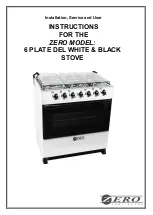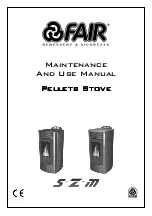
Introduction
Congratulations on your purchase of this Opus stove.
This manual will introduce you to the functions and correct operation of the stove. It is
important that your installer takes you through the operation of this stove during their
handover.
Our guarantee is valid only if the guidelines in this manual are carefully followed.
Please keep this manual, in order to remind yourself how to operate the stove before the
winter months.
1. Description
The stove is constructed of welded steel. In the centre is the firebox which is lined with
firebricks. In the 80 and 100 models there is a grate in the firebox base through which part
of the primary air enters and which allows ash to be cleared into the ashpan below. The
Tempo 70, which is designed to receive all of its primary air from the front, has a plate
which covers the grate which must be in place during use. The stove tool enables the plate
to be moved when the stove is not being used to allow ash to be cleared into the ashpan
below.
This stove works on the principle of convection, in which cool air is drawn up from the floor
and warmed between the inner and outer walls of the stove. This warm air is then spread
by convection around the room.
2. General
National and European standards, local construction regulations, fire protection law and
regulations must be observed.
It must be ensured that the installation room is adequately supplied with fresh air.
If extractor fans are present in the same or connecting rooms as the stove, additional
ventilation should be given to allow for this.
Calculation of the chimney set up should be done according to EN 13384-1 and EN
13384-2 with specific values which can be seen in this manual under the section 4.
The stove can be equipped with a connection for an
external air supply
(see image 1).
The round disc on the back should be removed and the optional 80mm spigot should be
connected using the self tapping screws. A direct air ducting kit is available to connect to
the exterior.
If the combustion air is being supplied from the outside, the duct size will need to be
increased for any duct over one metre long or any run containing bends. 90 degree bends
in particular strongly increase resistence and the duct must be upsized accordingly. The
duct length should not be longer than 6 metres with no more than three 90 degree bends.
The chimney must be able to overcome the additional resistance of the air intake ducting.
4
Содержание Tempo 100
Страница 1: ...OPERATION AND INSTALLATION MANUAL OPUS TEMPO...
Страница 2: ...FIRED BY DESIGN 1...





































